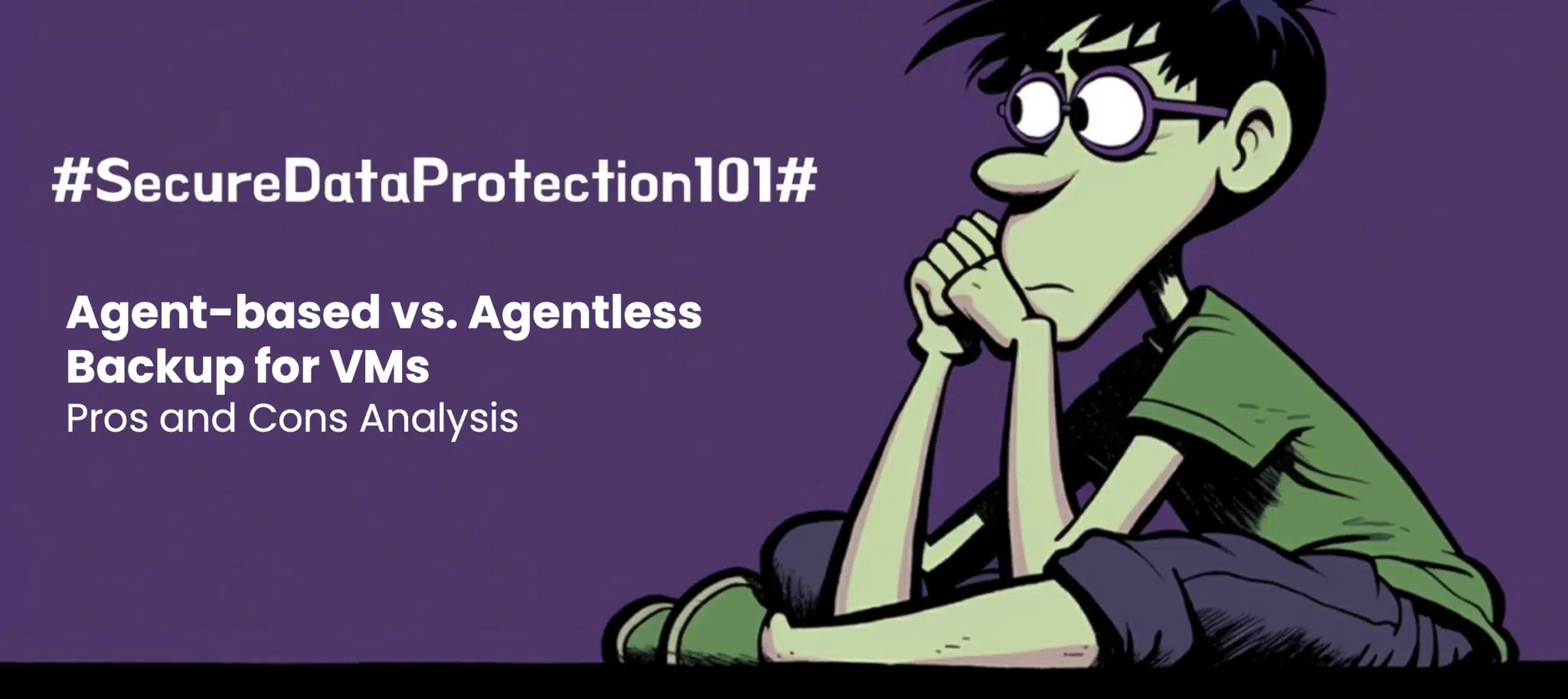Agent-based vs. Agentless Backup for VMs: Pros and Cons Analysis

Virtualization and Data Protection: Navigating the Advantages and Disadvantages of Agent-Based and Agentless Backups in Modern IT Infrastructures
Against this highly dynamic landscape of contemporary IT infrastructures, virtualization has indeed become the key initiative for businesses to gain flexibility, scalability, and efficiency. This paradigm shift has accentuated effective data protection strategies. From among the myriad of options available, two major methods of safeguarding virtual machines (VMs) stand out, which include agent-based and agentless backups. Each of the two has its pros and cons unique to them, and for that reason, businesses should always make sure they comprehend the differences for their decisions to be enlightened.
This synthesis attempts to make an encompassing view of both the advantages and disadvantages of the approaches helpful toward making the best-tailored strategy for data protection.
Agent-based Backup: Granular Control but Expensive
Agent backup solutions are the types of backups that require the installation of a dedicated software agent on every VM, giving control over the backup process.
Pros:
- Granular backup and recovery let the users take control of fine-grained objects that are being backed up—ranging from single files to full systems—so that they can design their backup strategy according to their needs.
- Application-Specific Support: Best for critical, complex applications and databases, with a guarantee of application-consistent backups for important systems.
- Enhanced Security: The security of data is improved by built-in security measures with VM deployments, adding one more layer of security to the agent-based backups.
Cons:
- Resource Heavy: The requirements by individual agents in each VM require an enormous amount of resources and could affect the performance of the system.
- Management Complexity: Managing a huge number of agents across many VMs gives rise to administrative overheads.
- Compatibility and Scalability Issues: This makes it difficult to maintain the scale since, to match the agents installed for any VM operating system, in addition to scaling up with the growing infrastructure requirements.
Agentless Backup: Simplifying Scalability and Management
Agentless backup solutions communicate directly with the hypervisor interface and do not need any software to be installed within the specific VMs.
Pros:
- Less overhead: Get rid of individually, inefficiently, with easy-to-manage agents, and reduce resource footprint on VMs.
- Ease of Deployment and Scalability: The agentless backup deployments are so simple that it become particularly beneficial for large or fluid virtual environments; they easily accommodate new VM additions.
- Comprehensive VM Coverage: Auto-discovery for new or modified VMs helps in automating the ensuring process of all parts of the virtual environment being protected without manual interventions.
Cons:
- Granularity at Risk: May not give an equal level of granular backup choices as agent-based solutions—potentially adding complexity to specific file or application recoveries.
- Application Consistency Challenges: Applications running within VMs risk data integrity since it’s harder to get consistent backups of such applications in case of recoveries.
- Dependent on Hypervisor Compatibility: The efficiency and capability of agentless backup solutions may greatly depend on the virtualization platform being used.
Hybrid Approach: Combining Strengths for Enhanced VMware Protection
For VMware environments, a hybrid strategy deploying both agent-based and agentless backups offers a complete solution. The first one undertakes an agentless approach to data protection for wide coverage with a minimum overhead, while the second approach brings in the use of agents for backup with the facility of granular control and application consistency. Features of instant VM recovery, support of complex applications, and resource efficiency are features that, in fact, should make such a flexible combination of methodologies stand out in features and general versatility.
Conclusion: Matching Backup Strategy to Business Case
It means the users would have to use the proper choice to navigate such complexities and understand all the details within the pros and cons of both these strategies regarding VM backup. While agent-based solutions offer detailed control and security, they come with higher resource and management costs. Agentless backups bring simplicity and scalability with the compromise of level of granularity and application-specific support. In businesses based on VMware, the above integrations with the two afford the respective strengths to have a well-rounded, all-inclusive, and flexible data protection solution in place. In conclusion, the choice between agent-based, agentless, or integrating both really should be in line with an organization’s specific needs, priorities, and their IT infrastructure, resulting in the best protection of their virtual environment.
Explore Both Approaches with Catalogic DPX
Catalogic DPX provides robust solutions for both agent-based and agentless VM backup approaches, enabling you to tailor your data protection strategy to your organization’s specific needs. To see these solutions in action and discover how they can enhance your data protection strategy, request a demo here.

